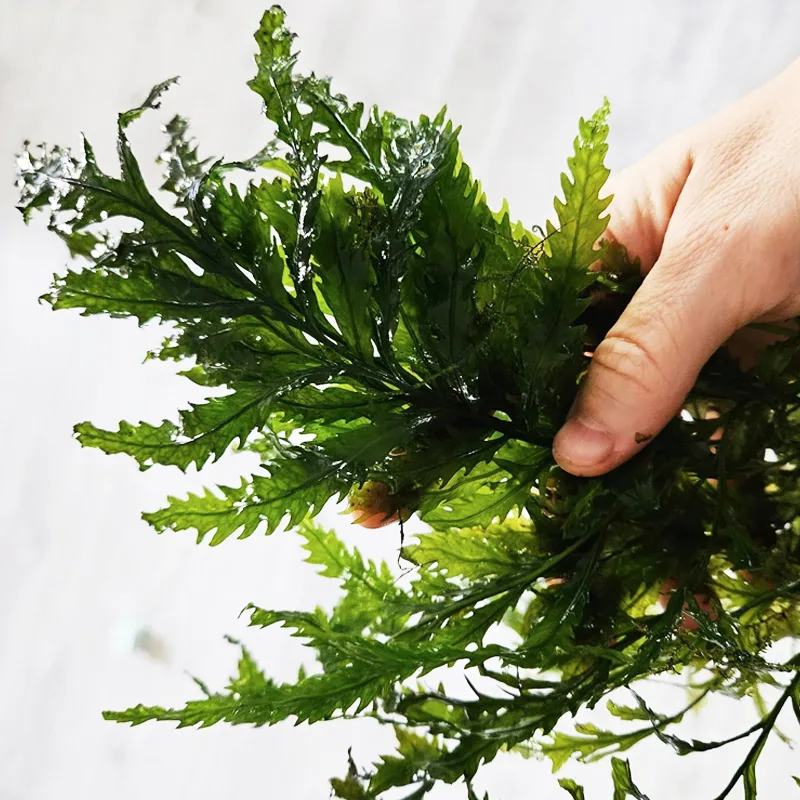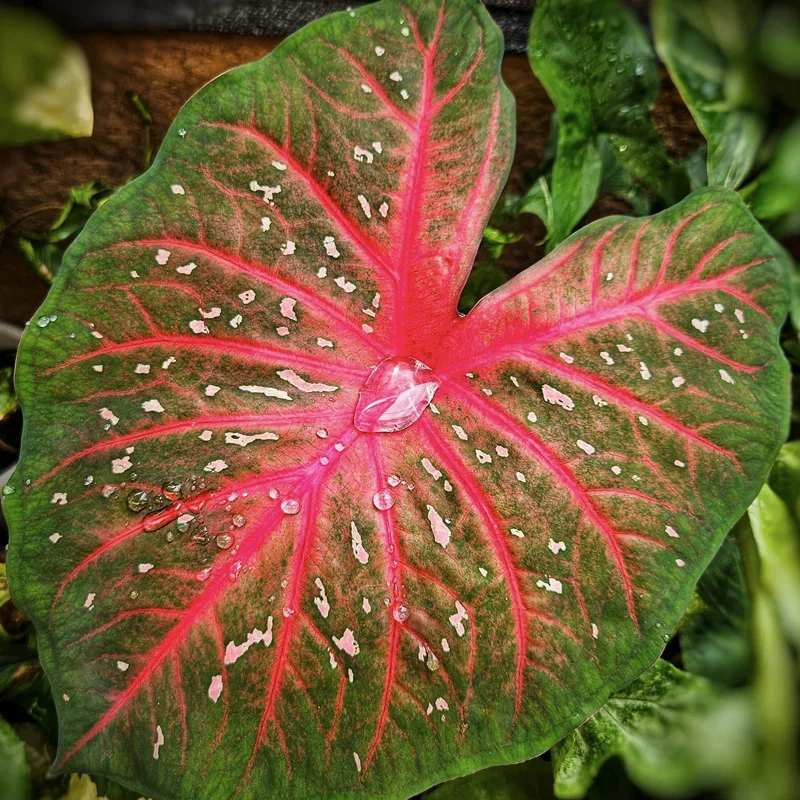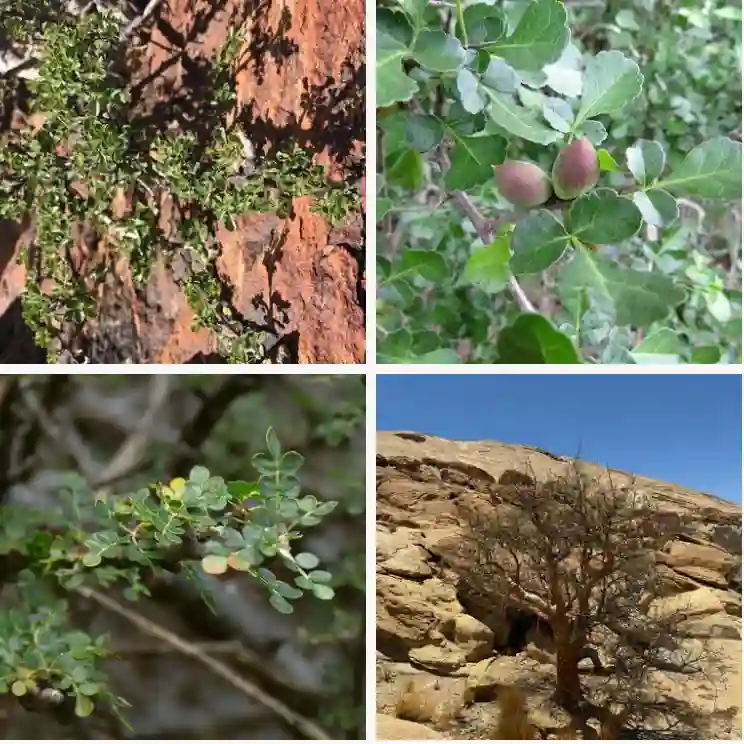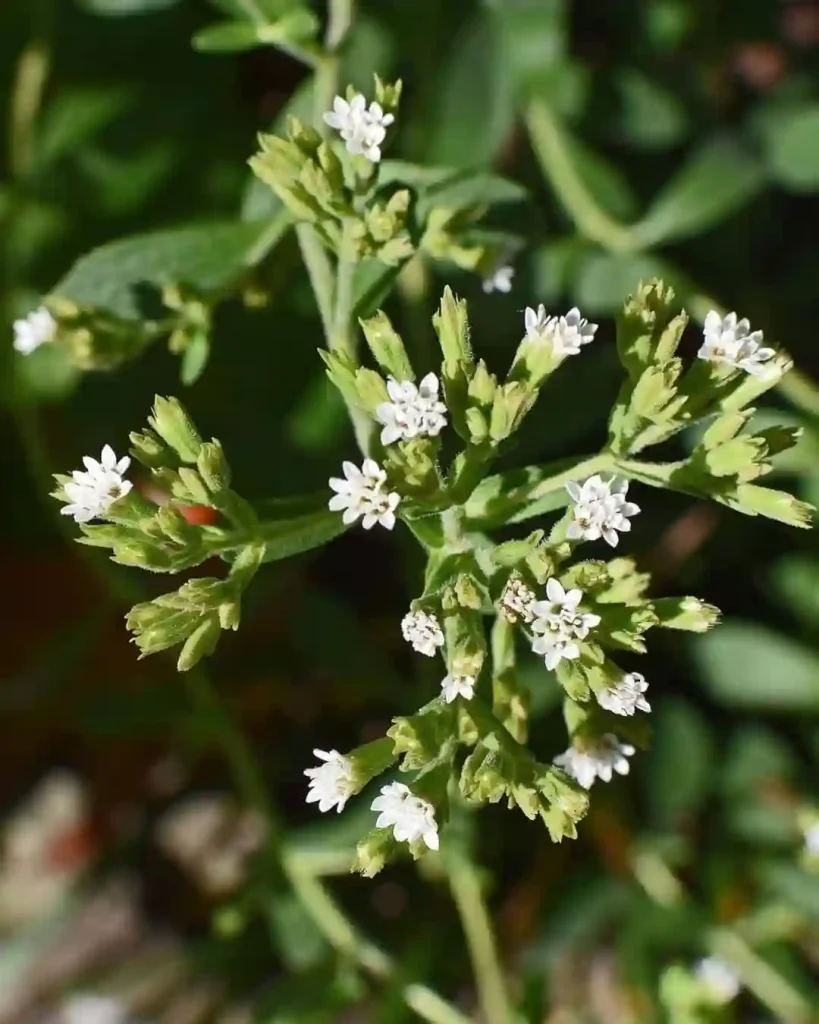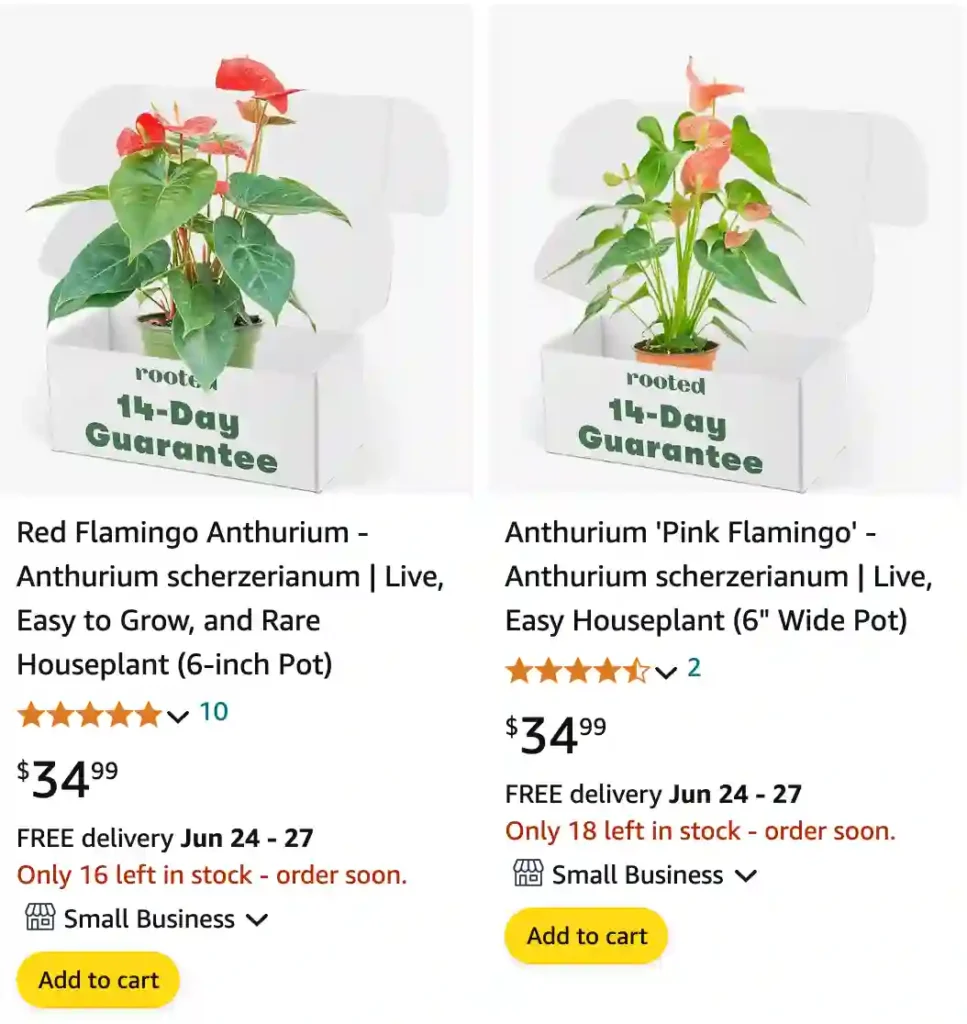
1. Introduction to Anthurium Scherzerianum: The Pigtail Bloom
1.1. What is Anthurium scherzerianum?
The Anthurium scherzerianum is a vibrant and widely popular species within the Anthurium genus, instantly recognizable by its exceptionally unique and often whimsical appearance. It is primarily characterized by its bright, often orange, red, or pink, glossy spathes (modified leaves that are often mistaken for petals) and its distinctively spiraled, curled, or “pigtail-like” spadix (the true flower spike) which protrudes from the center of the spathe. Its foliage consists of green, lance-shaped leaves. Native to the humid tropical rainforests of Central America (particularly Costa Rica), this epiphytic or terrestrial Aroid is primarily grown for its long-lasting and continuous “blooms,” bringing an exotic and cheerful aesthetic to any indoor space, making it a favorite for both casual growers and floral enthusiasts who appreciate its unique form.
1.2. Reasons for its Appeal
Anthurium scherzerianum captivates plant enthusiasts for several compelling reasons:
- Unique Spadix (Pigtail): The spiraled or curled spadix is its most distinctive and charming feature, setting it apart from other Anthurium species.
- Vibrant, Long-Lasting “Blooms”: Its colorful spathes provide a continuous display of bright, tropical color throughout the year, far outlasting typical cut flowers.
- Compact Size: It generally remains smaller and more compact than A. andraeanum, making it suitable for tabletops and smaller spaces.
- Relatively Easy Care: Despite its exotic appearance, it is generally considered a low-maintenance houseplant once its basic needs are met, making it suitable for a wide range of growers.
- Versatile Decor: Its striking appearance makes it an excellent choice for adding a pop of color and unique form to homes or offices.
2. Origins and Distinguishing Characteristics
2.1. Native Habitat
Anthurium scherzerianum is indigenous to the tropical rainforests of Central America, particularly Costa Rica. In its natural environment, it typically grows as an epiphyte (on trees) or sometimes terrestrially (on the forest floor). It thrives in conditions of consistent high humidity, moderate to warm temperatures, and dappled or filtered sunlight. It utilizes its robust roots to anchor itself and absorb moisture and nutrients from the humid air and decaying organic matter. Understanding these native conditions is crucial for replicating an ideal indoor growing environment.
2.2. Leaf and Spathe Morphology
The most defining characteristic of Anthurium scherzerianum is its unique spathe and spadix structure, along with its foliage:
- Spathe: The prominent feature. These are typically bright red, orange, or pink, glossy, and heart-shaped to oval.
- Spadix: The true flower, a fleshy spike protruding from the spathe, which is characteristically spiraled or curled, giving it the “pigtail” appearance. It is usually yellow.
- Leaves: Lance-shaped (elongated and tapering at both ends), dark green, and somewhat leathery. They are generally narrower and less prominent than those of A. andraeanum.
2.3. Growth Habit and Rate
Anthurium scherzerianum is primarily an epiphytic or terrestrial Aroid. It generally forms an upright clump of leaves and spathes from a central rhizome. It does not typically climb with aerial roots like vining Philodendrons. Its leaves and spathes grow outwards and upwards, creating a compact display. Its growth rate is generally considered moderate under optimal conditions, gradually unfurling new leaves and spathes that maintain their vibrancy for weeks or even months. It is known for being a relatively compact plant.
2.4. Toxicity
Like most other Anthurium species, Anthurium scherzerianum is considered toxic to pets (cats, dogs) and humans if ingested. It contains calcium oxalate crystals, which can cause irritation and swelling of the mouth, throat, and digestive tract, leading to discomfort, vomiting, and difficulty swallowing. It is advisable to keep this plant out of reach of pets and small children.
2.5. Comparison to Similar Anthurium Species (Andreanum, Crystallinum, Clarinervium)
Anthurium scherzerianum is primarily grown for its unique blooms, which distinguishes it from many foliage-focused Anthurium varieties. It is most often compared to Anthurium andraeanum.
- Anthurium scherzerianum: Characterized by spiraled or curled spadix and typically orange/red/pink glossy spathes with lance-shaped leaves. It is generally more compact than A. andraeanum.
- Anthurium andraeanum (Flamingo Flower): Features a straight (non-spiraled) spadix and vibrant, glossy, heart-shaped to oval spathes in a wider range of colors. Its leaves are typically heart-shaped and larger than A. scherzerianum. This is the more commonly sold “Flamingo Flower” type.
- Anthurium crystallinum: Features prominent white/silver veins on heart-shaped green leaves. Its leaves are typically smaller and smoother (not velvety). It is grown for its foliage, not its insignificant spathes.
- Anthurium clarinervium: Has smaller, thick, dark green, heart-shaped leaves with prominent white veining and often a velvety texture. Like A. crystallinum, it is prized for its foliage, not its blooms.
The key distinguishing feature of Anthurium scherzerianum is its unique, spiraled spadix.
3. Comprehensive Care Guide: Nurturing Your Pigtail Anthurium
Cultivating a thriving Anthurium scherzerianum involves providing consistent care that closely mimics its tropical origins, ensuring its lush foliage and continuous vibrant “blooms.”
Table 1: Quick Care Guide for Anthurium Scherzerianum
| Care Factor | Requirement Description |
|---|---|
| Light | Bright, indirect light (e.g., East-facing window, filtered South/West). Avoid harsh direct sun. |
| Temperature | Ideal range: 15-27°C (60-80°F). Protect from cold drafts. |
| Humidity | High humidity (60% or more) preferred. Essential for healthy growth and blooming. |
| Watering | Water consistently, allowing top 1 inch of soil to dry slightly. Avoid oversaturation. Ensure good drainage. Avoid overwatering. |
| Soil | Well-draining, airy, acidic potting mix (aroid mix, orchid bark mix, or epiphytic blend). |
| Fertilization | Balanced liquid fertilizer, diluted by half, every 2-4 weeks in spring/summer. Withhold in fall/winter. |
| Pruning | Remove spent spathes, yellow/damaged leaves. |
| Repotting | Every 1-2 years, or when root-bound, in spring. Increase pot size slightly. |
| Support | Not typically needed (upright clump). |
3.1. Light Requirements
Bright, indirect light is ideal for Anthurium scherzerianum. This is crucial for promoting abundant flowering and maintaining vibrant spathe coloration, as well as for healthy foliage. Place your plant near a window that receives plenty of ambient light but is shielded from harsh direct sunbeams, especially during the midday and afternoon hours. An east-facing window is ideal. For south or west-facing windows, use sheer curtains to filter the light or place the plant a few feet away from the window. Avoid harsh, direct sunlight, which can easily scorch the leaves, leading to unsightly brown spots and potentially dulling the spathe colors. Conversely, insufficient light will result in fewer and smaller spathes, slower growth, and less vibrant colors. Regularly rotating the plant ensures even light exposure and balanced growth.
3.2. Temperature and Humidity
As a plant from warm, humid tropical rainforests, Anthurium scherzerianum prefers consistently warm temperatures, ideally ranging from 15-27°C (60-80°F). It’s crucial to protect it from sudden temperature drops or drafts, as temperatures below 15°C (59°F) can stress the plant, halt growth, and cause leaf damage. Avoid placing the plant near open doors, air conditioning vents, or heating units.
High humidity (60% or more) is highly preferred by Anthurium scherzerianum. Optimal growth and continuous blooming are achieved with higher moisture levels. Signs of insufficient humidity might include crispy brown leaf edges or tips, or spathes appearing dull. You can increase humidity by using a room humidifier. Grouping the plant with other moisture-loving plants or placing its pot on a pebble tray filled with water (ensuring the pot itself doesn’t sit in the water) can also help create a more humid microclimate. Misting regularly can also be helpful.
3.3. Watering Practices
Proper watering is critical for Anthurium scherzerianum. The soil should be consistently moist but not waterlogged. Water thoroughly when the top 1 inch (2.5 cm) of soil feels dry to the touch. Ensure that the pot has excellent drainage holes and that any excess water drains out completely from the bottom. Never allow the plant to sit in standing water, as this is the primary cause of root rot. Overwatering is a common issue for this plant. Consistent yet moderate watering is crucial.
The frequency of watering will depend on environmental factors like light, temperature, and humidity, as well as the pot size and soil mix. Expect to water more often during the warmer, active growing and blooming months (spring and summer), typically weekly or every few days. During the cooler, dormant months of fall and winter, reduce watering frequency significantly, allowing the soil to dry out more thoroughly between waterings. Drooping leaves can indicate both underwatering and overwatering (due to root damage). Use filtered or distilled water if your tap water is high in minerals.
3.4. Optimal Soil Mix and Repotting
A well-draining, airy, and acidic potting mix is essential for Anthurium scherzerianum. This mimics the loose, organic matter it would find in its native epiphytic or terrestrial environment. An ideal mix should promote good aeration while retaining sufficient moisture. A suitable blend, often referred to as an “aroid mix” or “orchid mix” (or epiphytic blend), can include:
- High-quality potting mix (e.g., coco coir or peat moss)
- Orchid bark (approximately 30-40%) for excellent aeration and chunkiness
- Perlite or pumice (approximately 20-30%) to improve drainage and prevent compaction
- Horticultural charcoal (optional, smaller amounts) for moisture retention and impurity absorption
Repotting: Repot your Anthurium scherzerianum typically every 1-2 years, or when you notice it has become root-bound (roots growing out of drainage holes, water running straight through the pot too quickly, stunted growth). Spring is the best time to repot. Choose a new pot that is only 1-2 inches larger in diameter than the previous one, ensuring it has ample drainage. Terracotta pots can be a good option for breathability due to their porous nature.
3.5. Fertilization Strategies
During its active growing and blooming season (spring and summer), fertilize your Anthurium scherzerianum monthly, or every two to four weeks, with a balanced liquid fertilizer, diluted to half the recommended strength, or one formulated for aroids. This provides the necessary nutrients to support vigorous growth and continuous vibrant spathes. Reduce or completely stop fertilizing during the fall and winter months when the plant’s growth naturally slows. Over-fertilization can lead to salt buildup in the soil, which can burn the roots and cause leaf damage (e.g., crispy brown tips). Always water the plant thoroughly before applying fertilizer to protect the roots.
3.6. Pruning and Maintenance
Regular pruning is beneficial for Anthurium scherzerianum to maintain its appearance and encourage continuous blooming.
- Removing Spent Spathes: Once a spathe fades or turns green, cut it back at its base using clean, sharp scissors or pruning shears. This encourages the plant to produce new spathes.
- Removing Unhealthy Foliage: Remove any yellowing, brown, or damaged leaves to maintain its appearance and redirect energy to healthy growth.
- Cleaning Leaves: Regularly wipe the leaves gently with a damp cloth to remove dust, which improves the plant’s ability to photosynthesize and keeps the foliage vibrant. Use filtered or distilled water for cleaning.
- Pest and Disease Prevention: Avoid harsh chemicals or furniture polish nearby. Good air circulation is key to prevent diseases.
4. Propagation Techniques: Expanding Your Collection
Propagating Anthurium scherzerianum is possible, primarily through division or stem cuttings. The best time for propagation is during the spring or early summer when the plant is actively growing.
4.1. Division (for mature plants)
For larger, mature plants, division is an effective method during repotting. Gently separate sections of the plant, ensuring each new section has healthy roots and foliage attached, and then pot them up individually in well-draining aroid mix.
4.2. Stem Cuttings
- Select a Healthy Stem: Choose a healthy, mature stem section that has at least one node (the point where a leaf or aerial root emerges) and preferably one or two healthy leaves.
- Sterilize Tools: Always use clean, sharp, and sterilized pruning shears or a knife to make your cuts. This prevents the spread of diseases.
- Make the Cut: Cut the stem just below a node. Remove any lower leaves that would be submerged in your chosen rooting medium to prevent rot.
- Rooting Hormone (Optional): Applying a rooting hormone (powder or gel) to the cut end can stimulate faster and more robust root development.
- Rooting Medium Options:
- Water Propagation: Place the cutting in a clear jar with fresh, filtered water, ensuring the node is fully submerged. Change the water every few days to keep it clean and prevent bacterial growth. Roots typically begin to form within several weeks.
- Sphagnum Moss: Plant the cutting in moist, but not soggy, sphagnum moss. This medium provides excellent aeration and moisture retention, often leading to robust root development.
- Aroid Soil Mix: You can also plant the cutting directly into a small pot filled with a well-draining, airy aroid potting mix. Keep the soil consistently moist but not soggy.
- Provide Optimal Environment: Place your cuttings in a warm location that receives bright, indirect light. High humidity (e.g., within a propagation box or covered with a clear plastic bag to create a mini-greenhouse effect) will significantly accelerate the rooting process and help new leaves unfurl.
- Potting Up: Once the roots are a few inches long (for water or moss propagation), or significant new leaf growth is visible (for soil propagation), your new plant is ready to be transitioned to a larger pot with its permanent potting mix. Be gentle to minimize transplant shock.
5. Troubleshooting Common Issues: Pests, Diseases, and Environmental Stress
While generally robust, Anthurium scherzerianum can encounter a few common problems if its specific care requirements are not met. Prompt identification and action are crucial for maintaining its health and continuous blooming.
Table 2: Common Problems & Troubleshooting for Anthurium Scherzerianum
| Problem | Symptoms | Solutions/Treatment |
|---|---|---|
| Yellowing Leaves | Older, lower leaves turning yellow. | Overwatering (most common), insufficient light, nutrient deficiency, natural aging. Adjust watering, fertilize, check roots for rot. |
| Brown Crispy Edges/Tips | Leaves browning and feeling crispy at edges. | Low humidity (most common), underwatering, direct sun exposure, mineral build-up from tap water. Increase humidity, adjust watering, use filtered water, move to indirect light. |
| Drooping Leaves | Leaves losing turgor, looking limp. | Underwatering (most common), severe overwatering (root rot), cold shock. Check soil moisture, inspect roots, ensure warmth. |
| Few or No Blooms (Spathes) | Plant not producing colorful spathes. | Insufficient light, lack of fertilization, plant immaturity, environmental stress. Provide brighter indirect light, fertilize regularly, ensure consistent care. |
| Fading Spathe Color | Spathes appear pale, dull, or green rather than vibrant. | Insufficient light, natural aging, cold temperatures. Provide brighter indirect light, ensure warmth. |
| Stunted Growth/Small Leaves | Slow growth, new leaves are smaller than typical. | Insufficient light, nutrient deficiency, root-bound. Provide brighter light, fertilize, repot. |
| Pest Infestations | Visible pests (mealybugs, spider mites, thrips, scale), sticky residue, distorted growth. | Isolate plant, treat with insecticidal soap, neem oil, or appropriate pesticides. |
| Root Rot | Mushy stem base, black/brown, foul-smelling roots, yellowing/wilting. | Overwatering, poor drainage. Repot, trim rotten roots, improve drainage, reduce watering. |
| Fungal Leaf Spot | Various spots on leaves. | Improve air circulation, reduce humidity if too high, remove affected leaves. Fungicides if severe. |
5.1. Watering Issues
- Overwatering: This is a common cause of problems. Symptoms include yellowing leaves (particularly older, lower ones), black/brown spots on leaves, a mushy stem base, and a foul, moldy smell from the soil. This eventually leads to root rot.
- Solution: Allow the top 1 inch (2.5 cm) of soil to dry out completely between waterings. Ensure the pot has excellent drainage. If root rot is suspected, unpot the plant, trim any rotted, mushy roots, and repot in fresh, well-draining soil. Reduce watering frequency. Ensure the soil is consistently moist but not waterlogged.
- Underwatering: Symptoms include drooping or curled leaves, crispy brown edges or tips, and overall dull foliage. The plant may visibly droop when thirsty.
- Solution: Increase watering frequency. Ensure you are watering thoroughly so that water drains from the bottom of the pot, indicating the entire root ball has been moistened.
5.2. Light Issues
- Insufficient Light: Can lead to slower growth, smaller leaves, and significantly fewer or duller blooms. Spathes may appear faded or turn green.
- Solution: Move the plant to a location that receives bright, indirect light. Consider supplementing with a grow light if natural light levels are consistently low.
- Too Much Direct Light: Harsh direct sun, especially during midday, can cause leaf scorch. Symptoms include brown, crispy patches or a faded appearance on the leaves. It can also dull the color of the spathes.
- Solution: Relocate the plant to a spot with filtered light, or use a sheer curtain to diffuse intense sunlight.
5.3. Humidity and Temperature Stress
- Low Humidity: Often causes the leaf edges or tips to turn brown and crispy. Spathes may appear dull or develop brown edges.
- Solution: Increase ambient humidity (aiming for 60% or more) using a humidifier. Grouping plants together or using a pebble tray filled with water (ensuring the pot itself doesn’t sit in the water) can also help create a more humid microclimate. Misting regularly can provide a temporary boost.
- Cold Stress: Exposure to temperatures below 15°C (59°F) can severely stress the plant, leading to leaf damage, wilting, and overall decline. It can also cause spathes to fade or turn green.
- Solution: Ensure the plant is in a consistently warm environment (15-27°C / 60-80°F is ideal) and protected from cold drafts and sudden temperature changes from windows or air vents.
5.4. Pests
Common houseplant pests like mealybugs, spider mites, thrips, and scale can occasionally infest Anthurium scherzerianum.
- Symptoms: Visible insects (mealybugs with white, cottony masses; spider mites with fine webbing; thrips with silver streaks and black frass; scale with hard, immobile bumps), sticky residue (honeydew), or speckled, distorted leaves/spathes.
- Solution: Regularly inspect your plant, especially the undersides of leaves and in the crevices of spathes. Isolate infested plants immediately. Treat with appropriate organic pest control methods such as insecticidal soap or neem oil. Increasing humidity can help deter spider mites.
5.5. Diseases
- Root Rot: This is a serious fungal disease, almost always a result of overwatering and poorly draining soil.
- Symptoms: Yellowing, wilting leaves (even when the soil is wet), a mushy stem base, and black/brown, foul-smelling roots.
- Solution: Immediately remove the plant from its pot. Carefully inspect the roots and prune away all affected (mushy, black) sections with sterilized shears. Repot the plant in fresh, well-draining aroid mix, and adjust your watering schedule to allow the soil to dry adequately between waterings.
- Fungal Leaf Spot: Can appear as various spots on the leaves.
- Solution: Improve air circulation around the plant, reduce overly high humidity, and remove affected leaves. Fungicides may be used in severe cases.
6. Conclusion: Enjoying Your Thriving Anthurium Scherzerianum
Anthurium scherzerianum, with its vibrant, glossy spathes and unique spiraled spadix, is a truly captivating and rewarding plant to cultivate. By consistently providing it with bright, indirect light, appropriate watering (consistent moisture but not soggy soil), high humidity, stable warm temperatures, and a well-draining, airy soil mix, you can ensure your ‘Pigtail Anthurium’ thrives and produces continuous beautiful blooms. While it demands attention to its specific needs, the reward of nurturing its unique beauty and watching its colorful spathes unfold will bring immense satisfaction and a distinctive touch of tropical charm to your indoor space.
If i die, water my plants!
